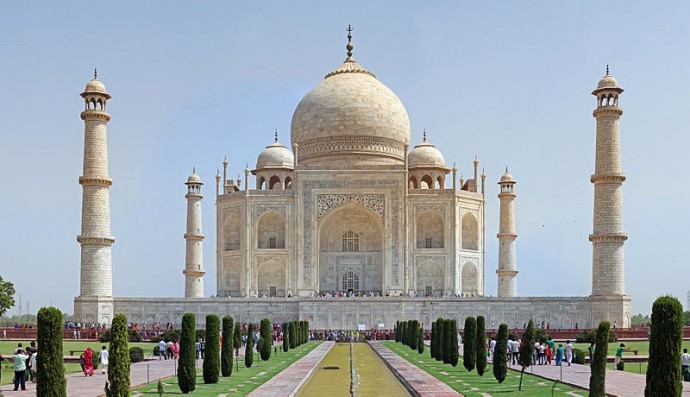India: Pollution turning the Taj Mahal brown

Airborne carbon soot particles are discolouring the Taj Mahal, the world heritage site in Agra city in India.
A study has pinpointed the reason for the marble dome changing colour, but where the carbon comes from and how to control it will decide the fate of the mausoleum.
"Our team was able to show that the pollutants discoloring the Taj Mahal are particulate matter: carbon from burning biomass and refuse, fossil fuels, and dust – possibly from agriculture and road traffic," said Michael Bergin, a professor in the School of Earth and Atmospheric Sciences at the Georgia Institute of Technology.
Air sampling done from November 2011 through June 2012 looked for fine particulate matter and total suspended particulate matter.
The team also placed small pieces of pristine marble onto the Taj Mahal at various locations near the main dome. After exposure to air pollutants over a two-month period, the samples were analysed for particle deposition using an electron microscope.
The air filters and marble blocks revealed particles of dust, brown organic carbon and black carbon.
The carbon soot could come from many sources, ranging from fuel combustion, cooking and brick-making, trash and refuse burning, and vehicle exhaust. The dust may arise from agricultural activities and vehicular traffic, notes the press release.
Finding the source and cleaning the air could help the Taj Mahal and people living in the area as carbon soot and particulates have major health impacts.
Beginning in the 1970s, a brownish cast to the white marble dome has been observed and routinely removed by cleaning. In 1998 the Supreme Court ordered measures to protect the monument including a ban on vehicles in the neighbourhood.
More than £90 million has been spent on the restoration work.
But four years back, a government survey noted that emissions of nitrogen oxides and particulates were high. With oil refineries and industries operating in and around, and hundreds of vehicles plying on the city roads, pollution does not seem to go away.
Mud packs have been added to the treatment to remove the discolouration and applied four times on the dome since 1994.
Besides surveys and reports, no systematic study had been done on the reasons for the dome discolouration.
The present study is a step in that direction. It was reported online December 3, 2014, in the journal Environmental Science & Technology.
In addition to Georgia Tech, researchers from the Indian Institute of Technology at Kanpur (IIT-K), Archaeological Survey of India (ASI), and the University of Wisconsin collaborated on the project.
The Taj Mahal was constructed at the bidding of Emperor Shah Jahan in 1653 as a mausoleum for his third and favourite wife, Mumtaz Mahal, who died giving birth to their 14th child.
© Copyright IBTimes 2025. All rights reserved.





















